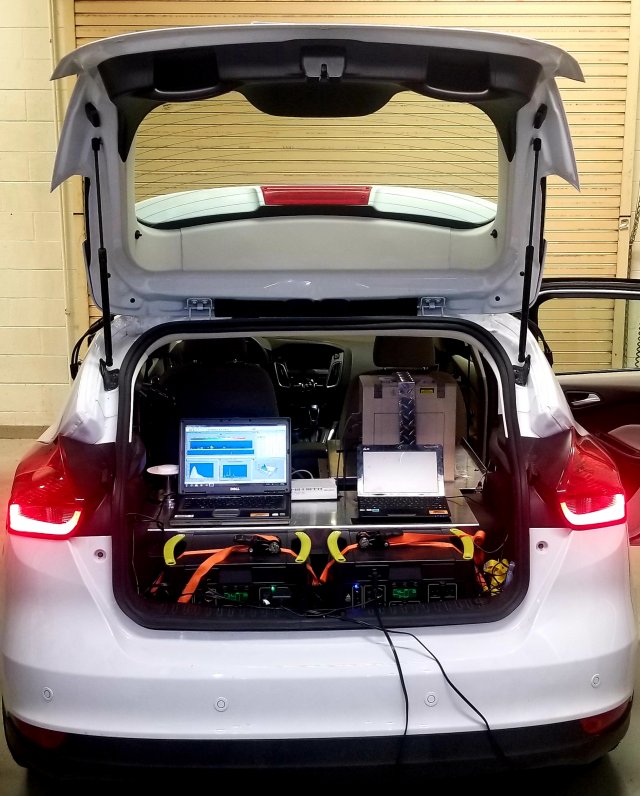Researchers Assess Roadside Vegetation Barriers with a Suite of Air Monitors
Published May 19, 2020

New and innovative air monitoring approaches are helping researchers learn more about solid and vegetation barriers and their ability to reduce exposures to harmful roadside air pollution. The work could benefit the health of millions of Americans who live, work, and go to school near major highways or other transportation facilities such as an airport or railyard.
Two pilot studies using vegetation barriers near roadways are under way with community partners—one at an elementary school in Oakland, California, and the other at a residential park in Detroit, Michigan. At both sites, community partners planted vegetation barriers and are assisting with monitoring while researchers measure air quality and weather patterns before and after planting the barriers to evaluate their ability to reduce and filter out air pollution.
A variety of air monitoring tools are being used to assess air pollution in and around the school and park including stationary and mobile research-grade monitors and air sensors. Portable sensors, which can be handheld or put in backpacks, will be used by community members while walking or biking. An EPA electric vehicle filled with sensors and monitors is providing additional air quality data, as well. EPA scientists also developed a kid-friendly air quality monitor called the “birdhouse” and a science curriculum to teach elementary school students about air quality.
Richard Baldauf, an EPA scientist and one of the project leads, says using different types of monitors strengthens the study. “Since all air monitoring techniques have different strengths and limitations, we use a combination of methods to effectively and efficiently gather the information needed,” he explains. “Combining methods also gives us a clearer understanding of the accuracy and representativeness of the measurements we collect.”
Using the monitor data, the researchers can create and evaluate models of how pollutants travel from roads into communities. This will allow them to see whether different types of vegetation barriers block pollutants by changing the airflow near roads or filtering pollutants from the air.

The sites in Oakland and Detroit will help researchers determine which types of vegetation barriers—such as bushes, trees, or a combination—may be most effective. The studies will take another two to three years to complete but results from similar EPA field studies suggest a combination of bushes and trees more effectively stops pollutants than no vegetation or vegetation with gaps.
In previous studies, the thick, tall vegetation barriers reduced downwind particle pollution by as much as 50 percent and other pollutants by 20-30 percent. These results show roadside vegetation is a promising strategy for communities to improve air quality and public health when designed and maintained properly.
The research is bringing together high technology and green barriers from mother nature to find new ways to protect people from air pollution.
This work is part of a larger research effort to understand air pollution exposures in near road environments, in response to the need to support air quality management programs within EPA’s Office of Air and Radiation.
Learn More:
Living Close to Roadways: Health Concerns and Mitigation Strategies
